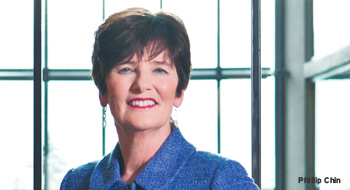
Anne Harvey, vice-president of HR with Vancouver Coastal Health Authority, discusses union involvement in her organization’s disability program.
Describe the process for getting the unions to participate.
A Letter of Understanding for a joint pilot project on disability management redesign was co-developed with the BC Nurses’ Union (BCNU) and signed in January 2009. The memo outlined that VCH wanted the union to participate, would share all data and would ask for union stewards at every disability case management meeting. The two other unions—the Health Sciences Association and the Hospital Employees’ Union—signed on to the pilot project later in the year.
What were participation rates like?
Before the agreement was signed and the project was brought in-house, participation by the unions in our absence management program was voluntary and, as a result, low. By the end of 2009, after the agreement was signed, employee participation in the early intervention had increased to 94% from 60%.
What kind of feedback did you get from the unions?
The BCNU was very supportive. They promoted the pilot program to their members and contributed constructive ideas to improve practices. They recognize that they are losing people from the profession. If a nurse is off for more than one year, [he or she doesn’t] always return.
How did you communicate with both union and non-union employees?
We hired a communications consultant to first help us run focus groups for all stakeholders. The information gathered helped us to identify problems with the disability management programs. We then published the results and sent this to all of the participating groups.
Where could VCH improve?
We have more work to do with support workers. We have to communicate more effectively why early intervention in absences and disability cases can help the workers and the hospitals—and will, ultimately, improve patient care.
Leigh Doyle is a freelance writer based in Toronto. leigh.doyle@gmail.com
Get a PDF of this article.
